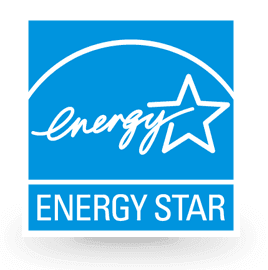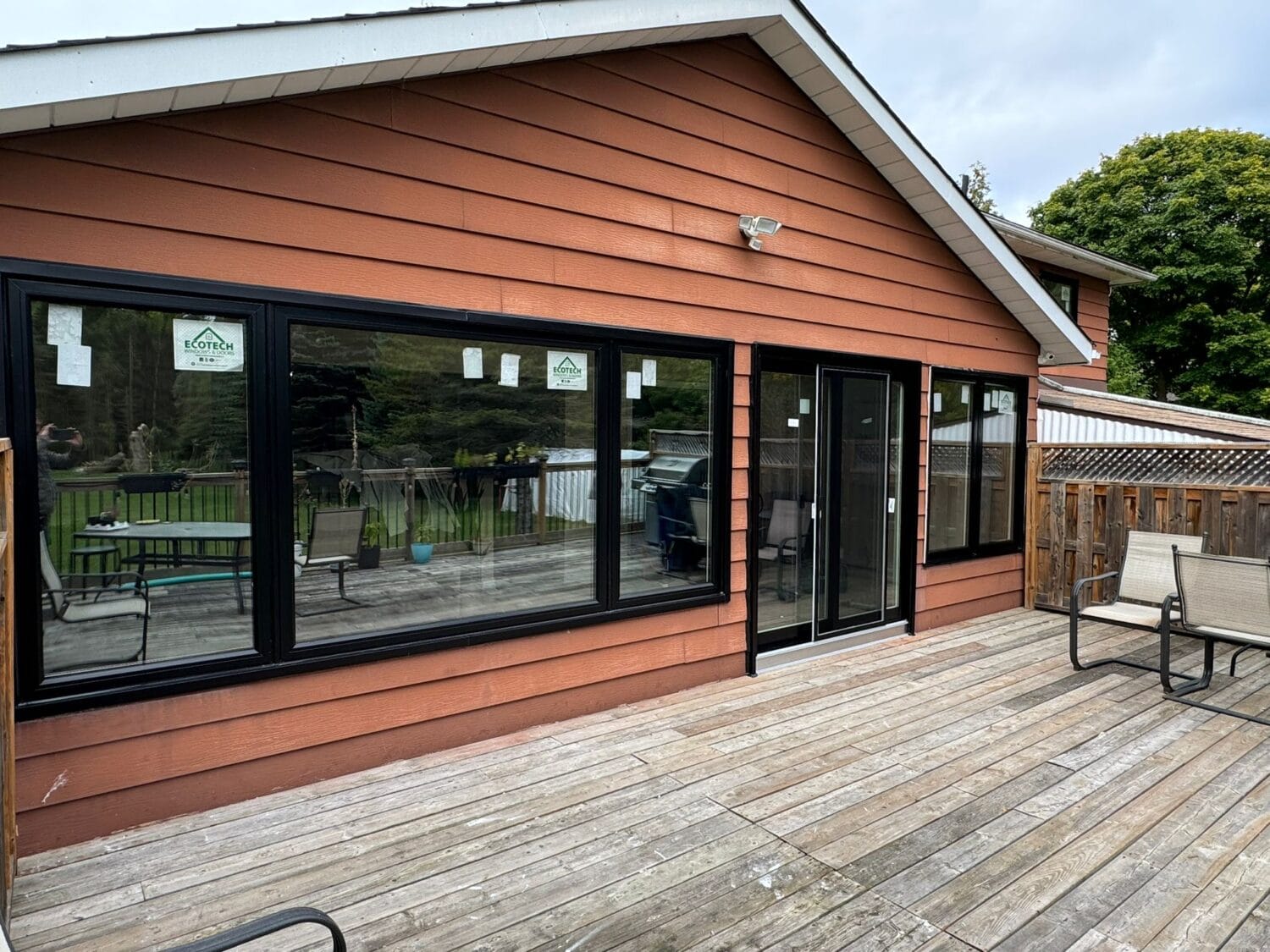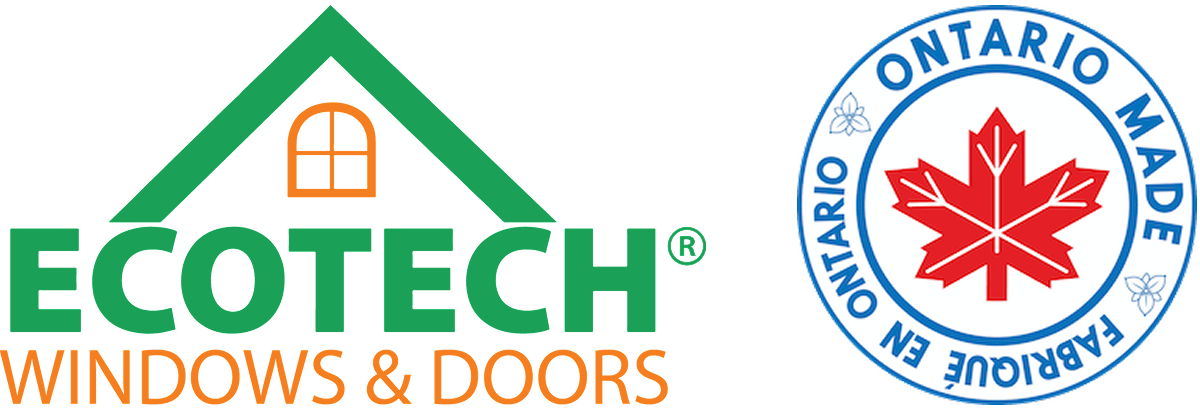When choosing windows for your home, energy efficiency is a key consideration. Energy Star window requirements are essential for determining which products meet rigorous energy efficiency standards. EcoTech Windows and Doors is proud to offer products that uphold these standards. This certification ensures that our windows, doors, and skylights provide superior energy performance. In this blog, we will explore what it means to be Energy Star certified. Additionally, we’ll break down the criteria involved and explain how to interpret these ratings to make an informed decision. By understanding these aspects, you can ensure that you choose the most energy-efficient options for your home.
What is Energy Star Certification?
Energy Star certification is awarded to products that meet stringent energy efficiency criteria. For EcoTech windows to receive this certification, they must adhere to the Energy Star window requirements, which include the following:

Manufactured by an ENERGY STAR Partner:
We produce our windows through manufacturers recognized as ENERGY STAR partners. This partnership ensures that we build products to meet high energy efficiency standards.
Independently Tested and Verified:
Each product undergoes rigorous testing and verification by the National Fenestration Rating Council (NFRC). This process ensures that our windows meet the high performance standards set by the program.
Compliance with Strict Energy Efficiency Guidelines:
Our windows adhere to the Energy Star window requirements established by Natural Resources Canada (NRCan) and the Canadian Standards Association (CSA). Consequently, these guidelines ensure that our products are both effective and reliable. Furthermore, by meeting these standards, we guarantee that our windows provide the energy performance you need for a more efficient home.
Criteria for Energy Star Certification
Energy Star-certified products are evaluated based on several criteria:
U-Factor:
The U-factor measures the rate of heat loss through a window, door, or skylight. A lower U-factor indicates better insulation and less heat loss. For energy-efficient windows, a lower U-factor is preferable.
Energy Rating (ER):
The Energy Rating (ER) is a comprehensive measure that includes the U-factor, air leakage, and the potential benefits of solar gain. A higher ER value indicates better potential annual energy savings.
Also Read: Energy Rating for Windows – EcoTech Windows & Doors
Air Leakage:
Energy Star-certified products must have an air leakage rate of ≤1.5 liters per second per square meter of product area. This criterion ensures that the product minimizes drafts and contributes to a more stable indoor environment.
Here’s a summary of the criteria:
| zone | Heating
degree-day range |
Minimum Energy Rating
(Unitless) |
or | Maximum U-factor W/m2 •K (Btu/h•sq. ft.•°F) |
| 1 | <3 500 | 25 | or | 1.60 (0.28) |
| 2 | 3500 to <6 000 | 29 | or | 1.40 (0.25) |
| 3 | ≥6 000 | 34 | or | 1.20 (0.21) |
Source: Natural Resources Canada
Understanding U-Factor and R-Value
While windows and doors are not typically assigned an R-value, this measure is often used to gauge performance. Specifically, the R-value indicates resistance to heat flow; therefore, higher R-values denote better insulation. To help you understand this concept more clearly, we have included a conversion table below. Additionally, keep in mind that R-values are derived from U-factors. Consequently, they cannot be directly converted from Energy Star window requirements or Energy Rating (ER) values.
U-Factor to R-Value Conversion Table:
| U-factor (W/m2 •K) |
U-factor (Btu/h•sq. ft.•°F | R-value (sq. ft.•h•°F/Btu) |
| 3.40 | 0.60 | 1.7 |
| 3.20 | 0.56 | 1.8 |
| 3.00 | 0.53 | 1.9 |
| 2.80 | 0.50 | 2.0 |
| 2.60 | 0.46 | 2.2 |
| 2.40 | 0.42 | 2.4 |
| 2.10 | 0.37 | 2.7 |
| 2.00 | 0.35 | 2.9 |
| 1.80 | 0.32 | 3.2 |
| 1.60 | 0.28 | 3.6 |
| 1.40 | 0.25 | 4.0 |
| 1.20 | 0.21 | 4.8 |
| 1.00 | 0.18 | 5.6 |
| 0.80 | 0.14 | 7.1 |
| 0.60 | 0.11 | 9.1 |
Also Read: ER Ratings for Windows: Unlocking Energy Savings with EcoTech Windows & Doors
What is the Most Energy-Efficient Window?
To determine the most energy-efficient window, it’s essential to recognize that the shape of the window does not influence its energy performance. Instead, the key factors include the frame material and the type of glass used. Consequently, focusing on these elements will help you find a window that maximizes energy efficiency.

At EcoTech Windows and Doors, we recommend vinyl windows for their energy efficiency, durability, and cost-effectiveness. In contrast, aluminum windows are poor insulators and can suffer damage during storms; therefore, they are less desirable. On the other hand, while wood windows also offer good energy efficiency, they generally have a shorter lifespan and come at a higher cost compared to vinyl. Consequently, vinyl windows are often the best choice for combining performance and affordability.
For the glass, double or triple-pane options are the best choices. Single-pane glass is less efficient and should be avoided. Argon gas is an excellent insulator, especially beneficial in extreme climates, while Low-E glass enhances insulation further. Be sure to verify that the windows meet the Energy Star window requirements and U-factor requirements for your specific region.
Enhance Your Home’s Energy Efficiency with EcoTech
At EcoTech Windows and Doors, every window we offer is designed with both quality and energy efficiency in mind. Our dedication to providing you with cost-saving, energy-efficient home products extends beyond just windows; we also offer high-performance doors. To find out more about how we can improve your home’s energy efficiency and comfort, explore our vinyl window selection and schedule your free consultation today.



